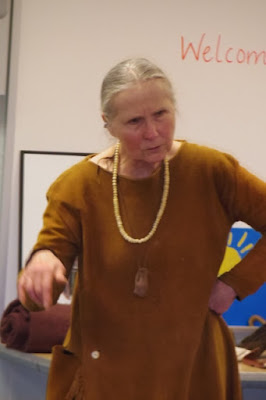“I was adopted by the Senecas. I was given food, shelter, and was taught the language.” A few years later, she was married to a tall, elegant Delaware, named Sheninjee. It was an arranged marriage. He was a kind man, who won her heart. “After a time, he won my affection. I had a daughter, who lived two days. Later, I had a son, whom I named Thomas.”
At this point,Mary had been with the Indians for four years. “This was my family. In many ways, our lives were much better than the settlers’ lives.”
She talked about a long, difficult journey on foot. “Imagine walking 500 miles. I carried the baby on a cradleboard. It rained constantly, and there were mosquitoes. I rubbed the fat from bears on me and the baby to repel the mosquitoes. When I arrived near the Great Falls, I was received by my Indian mother and two sisters.”
The British were in Fort Niagara, near the Great Falls. There was a battle. It was a difficult time.
Then, to add to the sorrow that Mary experienced, “I found out that my husband became ill and died. My Indian mother did all she could to comfort me.”
She had forebodings of bad things that were about to happen. “I felt that someone was watching me. I felt cold fingers up my spine. If you know what the truth is, you must follow your heart. Women are good at this, but men are not.” She ran away from a man and hid in a cabin for three days. She feared being turned over to the British in Fort Niagara.



